The Mach 429 SL is racecourse fast but feels almost as confident and comfortable as a trail bike. It kept pace with bikes that had and inch more travel in the rear. Of course, we couldn’t help but think that even a bit more travel and slightly slacker angles would make the bike still more enjoyable—and Pivot has delivered with the brand new , with 116 millimeters of rear travel and a 130-millimeter Fox 34 fork. We can’t wait to ride that bike, especially on more rugged terrain. But that doesn’t, in the slightest, make the 429 SL obsolete. On less techy trails, this bike will be pretty capable and really damn fun.Â
This bike encompasses the trend toward more capable, more enjoyable cross-country bikes, while still retaining the slim, fast, explosive speed of a racer. And for many places, especially where the trails aren’t all that challenging, this bike will be plenty adept while still being fun because of its lightweight. The graphics and look are bit staid relative to the competition. But that just begs the question: Is it better to look fast or be fast? The 429 SL argues for the latter.Â
The Takeaway
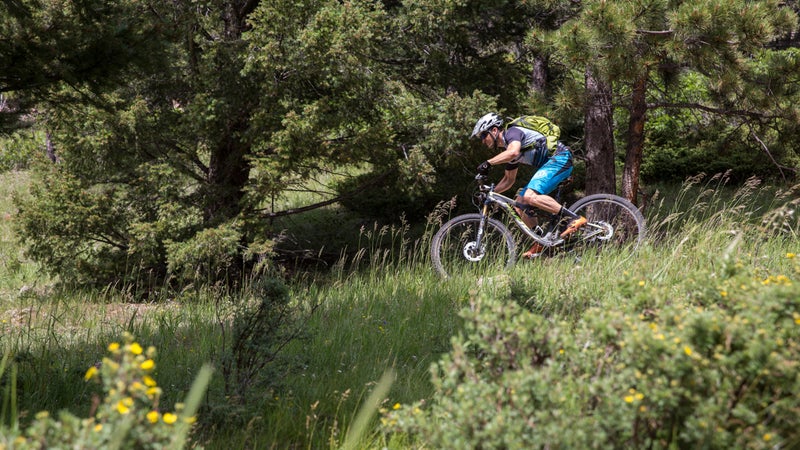
The Good: Ride quality is decidedly less cross-country severe than you’d expect for a short-travel 29er. Stand-over height on the frame is low relative to the competition. The XTR Di2 integration is seamless, smart, and the best in the market. A dropper post might seem strange on an XC bike, but it’s been a fun, performance-enhancing addition.
The Bad: Aesthetics are sensible and staid, verging on dated. The Fox 32 fork is noodly and can’t keep up with the rear suspension, which is presumably why Pivot upped the spec to 34s across the board for 2016. With the advent of Boost hub spacing, our tester is already behind developments—that’s not Pivot’s fault, but it’s an industry issue that needs addressing.
The Verdict: Having gone on a half-pound diet from its previous iteration, the Mach 429 SL is finally at fighting weight. However, it rides differently than much of the competition—namely the Specialized Epic, which is the XC benchmark in our book—with a more active suspension, a longer fork, and an overall plusher feel. It’s still greyhound fast, but this bike continues the trend of more capable, easier-riding race machines.Â
The Specs
- Wheel Size:Â 29 inch
- °Â±đľ±˛µłółŮ:Ěý23 pounds
- łŇ°ů´ÇłÜ±č´Ç:ĚýShimano XTR Di2
- ±Ę°ůľ±ł¦±đ:ĚýFrom $8.800, with Shimano XTR Di2
The Frame
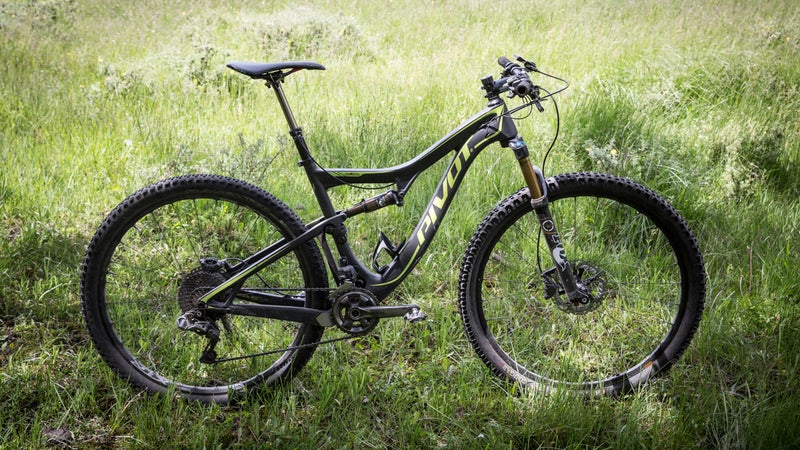
We liked the suspension feel and snappy handling of the Mach 4 Carbon, the 27.5 version of this platform launched late last year. But we couldn’t help think a short-travel bike is best paired to big wheels for the added momentum and rollover. The , which came out not long after the 4C, addressed pretty much every one of our concerns. At 100 millimeters in the rear, it has a little less travel than the 27.5 version, though our sense is that the bigger wheels more than make up for the difference.
More importantly, the frame lost a lot of heft from previous iterations. Pivot claims the frame, shock, and hardware add up to 5.3 pounds, and though we haven’t verified that, we can say that, with comparable lightweight parts, a complete bike now goes just under 23 pounds—on a par with the Specialized Epic and most other XC racers.
Chris Cocalis, meticulous engineer and founder of Pivot, worked on the 429 SL in tandem with Shimano as it developed XTR Di2. Result: This full carbon frame is perfectly optimized for the first commercially viable electronic group set. A trio of neat, hex-bolt ports on the underside of the downtube provide access for cable routings, as well as a battery housing option if you can’t run the seat post because you opt for a dropper (as we did). One of my biggest peeves with the early iterations of electronics is that the cable management and mechanics of it never measured up to the incredible engineering of the components. Pivot has conquered this, with clean internal cable routings, surgically cut ports and covers that keep cables neat, and integration for the range of mechanical setups, including a nifty emblem to cover the front derailleur mount so your bike doesn’t look like a chop-shop victim if you opt for a 1x setup.
The numbers are pretty much what you’d expect for an XC 29er—a 69.3-degree head angle, which is steep but still easygoing enough to pilot on most terrain, and chainstay lengths that aren’t exceptionally short but are appropriate for good acceleration and fast hammering. The stack and reach are nominally higher than other XC race bikes, which might account for why the 429 SL feels easier and more fun than its counterparts when descending. Though you could also attribute that to Pivot’s careful execution of the DW Link suspension, as it is softer and more fluid than versions we’ve tried on other licensees (think Ibis and Turner).Â
The Build
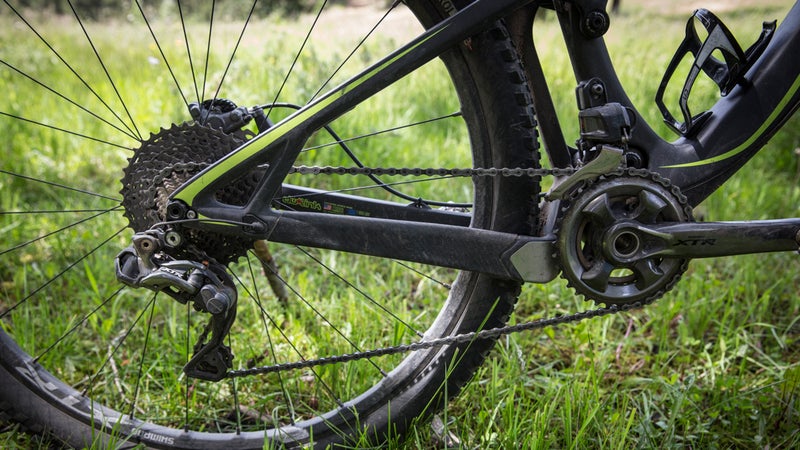
Our test bike was a one-off setup with a full run of Shimano parts, and, as such, it’s not available to the public in this exact iteration. Pivot does offer an XTR Di2 build starting at $8,800. That’s a lot (though comparable or less to the competition), but the same exact frame with a 2×10, XT/SLX group goes for $4,600—an excellent deal on an excellent bike.
Other than the high price, it's hard to say much negative about XTR Di2—it is really that good—and since I’ve already gushed about it in this column, I won’t dwell any longer here. However, it’s worth stopping on a few other points. For one, I like the 2×11 setup and don’t even mind that the 11-40 cassette range is smaller than SRAM’s. However, my bike came with 34-24 chain rings up front, which is a total waste because you lose all the big gear advantages of running two rings. If you are going 2x, definitely opt for the 38-28 gearing.
While I love Shimano parts for excellent engineering and reliability, it’s tough to recommend the XTR 9000 Trail wheels. To be fair, it’s great that, unlike SRAM, you can run the 11-speed cassette on the same free hub body as with fewer rings. But at 1,610 grams, these wheels are too heavy to keep up with the competition. And while you can sometimes justify extra weight based on added durability, I put three big diggers in these rims in six months of riding. Bottom line: These are good wheels and very solid, but for the price, there are lighter, sturdier options out there.
As I’ve previously noted, the Fox 32 forks of the past few years have been a bit soft, unpredictably dive-y, and difficult to adjust. Same went for this 120-millimeter specimen—though we appreciated the extra 20 millimeters of travel over most XC bikes—and it felt especially anemic given how capably the rear suspension performed. Even as a race bike, the 429 SL begged for a bigger, sturdier fork. And Pivot must have concurred, as it's stocking nothing but 120-millimeter Fox 34s for 2016.
The Ride
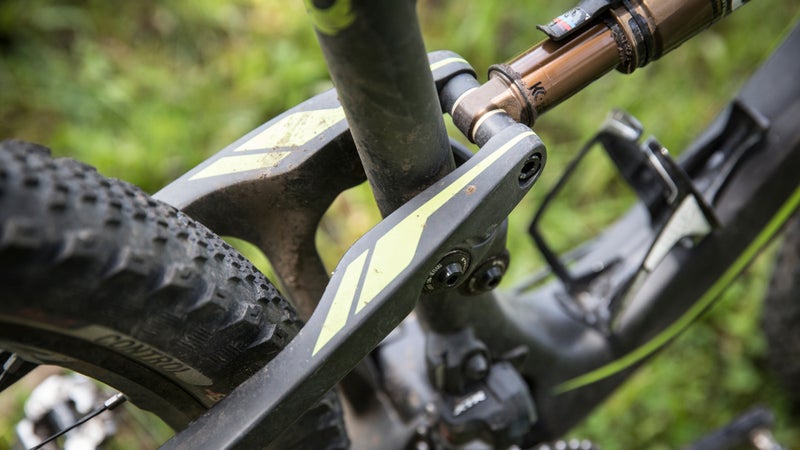
Lighter parts, slacker angles, and better-tuned suspensions are making race bikes—once stiff and a bit sketchy—much more capable. The 429 SL embodies this trend. It’s svelte enough to take on an XC World Cup course, but also plenty compliant and confident to deal with steep, rubble-choked chutes and full-on rock obstacles. On one of the burliest trails in Santa Fe, which had me walking in the past on short-travel bikes, I was able to roll through tight switchbacks stuffed with loose rocks and down a couple of five-foot rock drops. Yes, the big tires and dropper post were a factor. But the rear end of the bike, while definitely a bit outclassed by the terrain, still managed.
Of course, the 429 SL pedals great, as well, which wasn’t a foregone conclusion. The softer tune on the DW Link had me worried that efficiency would be lost. But the switch on the rear shock worked wonders, with the bike all but fully locked out in Climb mode. But truth be told, I kept it in Trail and Descend modes most of the time because, except on pavement, both seemed to offer better traction and climbing than the stiffest setting.
 Regarding the extra rubber and dropper post, which aren’t generally spec’d on XC bikes because of the weight they add, I’d argue they might be worth considering. Sure, it’s nice to have the lightest bike you can get, and the times we entered races we trimmed the 429 SL down to its barebones. But for everyday riding, we were amazed how just a little more traction plus a dropper made this bike perform well beyond its intentions. It was definitely overwhelmed in big, techy terrain, but it coped better—and was much more fun to ride—than many comparable short-travel bikes.Â
Fit/Sizing
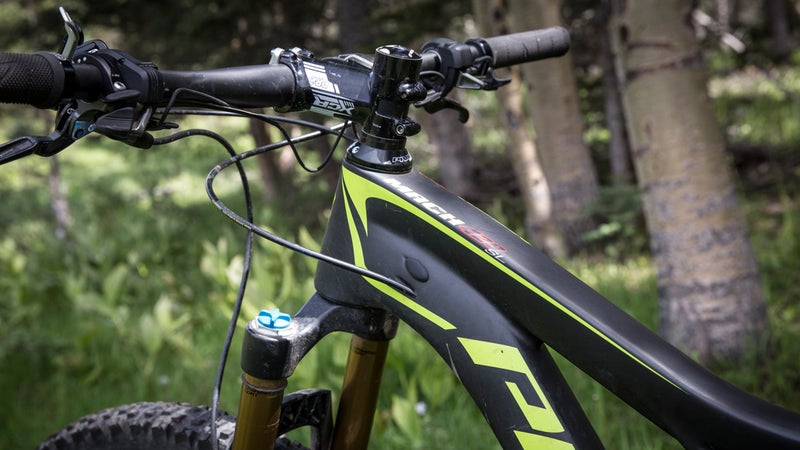
The 429 SL fits true to size. But, thanks to the very low top tube, the stand-over height is excellent. That makes it an easy bike to jump, rail on, and push around. And it also means that smaller riders, who otherwise find 29ers too large, will likely feel comfortable aboard this rig.
The Competition
We have long considered the Specialized Epic the best XC bike on the market, but the new crop of longer, slacker, yet still lightweight race bikes are challenging that supremacy. It’s true that the Epic has some advantages, such as space for two full water bottles—the Mach 429 SL fits only one, and just barely. Still, it seems that the days of super-steep head angles and firm suspensions are on the way out as bikes with softer, more manageable ride characteristics shed pounds.Â
The Ibis Ripley rides a lot like the Pivot, albeit it's a bit stiffer, thanks to the DWLink suspension. The Yeti SB4.5 and Santa Cruz Tallboy are easier-going, short-travel 29ers. The Niner Jet 9 RDO compares favorably with the Pivot, and even has the same small-manufacturer appeal, but it is heavier and also a bit more solid feeling. Finally, there’s the , which isn’t quite as relaxed as most of these bikes, but rides incredibly well and costs a lot less.


